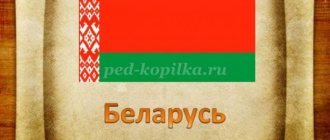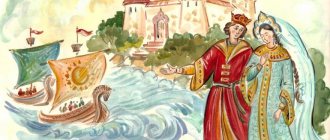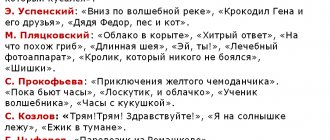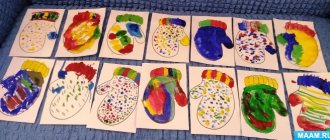How to compose a fairy tale with your child
By writing fairy tales with your child, you can touch his inner world, learn about what worries him, scares him, or, on the contrary, inspires and supports him. The plot of a fairy tale is built according to certain canons: in essence, it is a sequence of events united by a certain plot.
Start by creating a main character. Give him a name and image. You can also involve art therapy here - draw a hero or sculpt him from plasticine. Find out from your child what qualities the hero has, what his character is. Discuss what your story will be about. Typically, the main character has a goal and there are obstacles to achieving it. Also in the fairy tale there are hero-allies and hero-opponents. In the process of creating a plot, try to draw parallels with the child’s real life: ask how this relates to his experience and experiences, why did he choose such a goal and such tests for the hero?
How fairy tales can be useful to parents
Fairy tales for children are not only an exciting journey into the world of fictional characters. Through fairy tales, children receive their first knowledge about the structure of life. At first glance, the world of fairy tales may seem black and white, with a clear division into good and evil. However, if we look deeper, fairy tales can also teach children a broader view of events and people. For example, the troubles and trials that befall the hero ultimately help him become stronger and more resourceful and lead to some desired changes. And sometimes in fairy tales there are ambiguous characters who, at first glance, behave like villains, and then are revealed - it is discovered that there are some reasons behind their behavior, or it was not villainous at all, but ultimately helped the hero.
Few parents know that fairy tale therapy can trigger the body’s self-regulation mechanisms. Blogger I am a Parent, clinical psychologist and certified fairytale therapist Ekaterina Blukhterova brings to your attention the therapeutic fairy tale “The Good Forest”: it will help your child find the inner strength for a speedy recovery.
How to read a fairy tale with a child
The main goal of discussing fairy tales is to build a connection between the behavior of the characters, the events occurring in the fairy tale and the real-life situations that the child faces. In this case, the plot of the fairy tale is transformed for the child into a personal store of knowledge and ideas, which he can turn to if necessary, for example, if he finds himself in some difficult situation. The famous fairytale therapist Tatyana Zinkevich-Evstigneeva suggests using the following scheme for discussing fairy tales:
A fairy tale is a lie, but there is a hint in it...
Discuss with your child what the fairy tale is about and what it teaches. Ask, in what situations in real life can what a child learned from a fairy tale be useful?
Baba Yaga vs. beautiful girl
Discuss the heroes of the fairy tale. Why does the hero perform this or that action? Why does he need this? What did he really want?
Fire, water and copper pipes
Talk about how the heroes of the fairy tale overcame difficulties. Did they turn to anyone for help? Perhaps someday your child will be able to use these methods in real life.
...a lesson to good fellows!
What feelings does this fairy tale evoke? Which episodes were particularly memorable? What episodes evoked joyful feelings? Which ones are sad? What situations caused fear?
Using the same scheme, you can discuss with your child the feature and animated films you watched together.
Fairy tale - a game teaching method
It has long been known that children learn information more easily and quickly through play. Listening to a fairy tale, they can easily imagine the image of the very heroes about whom they are told. Through a fairy tale, it is very easy to explain to a child simple truths that are extremely necessary in life.
For example, in the fairy tale “Kolobok”, we see how the main character runs away from his parents, talks with strangers, and see what this leads to.
How to come up with new endings to existing fairy tales
Sometimes, in order to help a child find a solution to a problem through a fairy tale, you don’t need to compose a new one. It is enough to come up with a new ending to one of those that already exists. Here it is important to choose a fairy tale whose key problem will coincide with the one that is currently relevant for the child. For example, if a child is worried about a strict teacher who gives a lot of tasks or gives low grades, you can discuss the fairy tale about Cinderella with him.
In fairy tales, magic often comes to the aid of the main character. Cinderella, for example, is protected from her stepmother by her fairy godmother. How could Cinderella cope on her own, without magical help? Was her stepmother so unfair to her, since Cinderella herself ran away without completing the “homework” left to her? Did Cinderella have any options to negotiate with her stepmother?
So, with the help of fairy tale therapy, you can help your child change his attitude towards a situation that he experiences as hopeless or unfair. With your help, he will learn to look at the problem from different angles, look for options and not feel small and helpless.
Anna Kolchugina
Does your child believe in miracles? Find out together! TAKE THE TEST!
Consultation on the topic "Fairy tale as a method of raising children"
Fairy tale as a method of education
preschool children.
V.A. Sukhomlinsky wrote: “A fairy tale is a seed from which a child’s emotional assessment of life’s phenomena grows.”
Today, the most effective and proven methods and means of raising children have become undeservedly forgotten. Fairy tales are one of the most ancient means of moral and ethical education. They also form behavioral stereotypes of future members of adult society. In this regard, abandoning this method of raising children seems detrimental for future generations.
Raising children with fairy tales is one of the most ancient methods of raising children. Through fairy tales, our ancestors passed on moral norms, traditions and customs, their life experiences and attitudes to the world to the younger generation. The heroes of fairy tales should be an example for the child: their experience teaches the child what to do or not to do. Such an example is more understandable to a child than a categorical parental “no!”
In order for fairy tale education to be effective, it is not enough to simply tell the child the first fairy tale that comes across. The fairy tale must be selected depending on the age of the child, the characteristics of the child’s character. For example, up to two years of age, education with a fairy tale does not make sense - the fairy tale will not interest the baby. At such an early age, you need to start with lullabies and rhythmic rhymes and jokes.
The younger the child, the simpler the plot of the fairy tale should be. In the period from 2 to 3.5 years old, classic folk tales are suitable for reading, on which more than one generation of children has grown up: “Kolobok”, “Turnip”, “Teremok”. They are good because the actions in them are built on the principle of repetition. This makes it easier for the child to navigate the narrative. After a while, you can move on to longer and more meaningful fairy tales: “Little Red Riding Hood”, “The Three Little Pigs”. At this age, fairy tales about animals are often more understandable to a child. The world of adults seems too complicated to a child, there are many rules and restrictions. the plots of fairy tales about animals are more accessible to his understanding. At the age of 2-3 years, fairy tales about mutual assistance, the triumph of justice and truth over injustice and deception will go best.
At three years old, the word “I” appears in the child’s vocabulary, and he begins to recognize himself as an individual. The child begins to identify himself with the main character of the fairy tale, so you need to select those fairy tales with whose hero the child could associate himself. At this age, the process of self-identification begins, so the gender of the main character must match the gender of the child - otherwise the child will lose interest in a fairy tale and education with a fairy tale will be ineffective.
Older preschoolers (5-6 years old) can already be offered fairy tales - books by Astrid Lindgren, “Mary Poppins” by Pamela Travers, stories and stories by Nikolai Nosov, children's detective stories by Enid Blyton. There are so many good children's books! The child no longer just identifies himself with the main characters, but can draw parallels between their behavior and his own: “If I were him, I would do something wrong.” At this age, being raised with a fairy tale helps the child understand what is going on in the world There are no absolutely bad and absolutely good people: positive characters can make mistakes, and negative ones can do good deeds (even if unconsciously). But there is no need to rush through this stage: until the child clearly understands from simpler fairy tales what “good” is and what such a “bad” thing, he will not be able to distinguish the nuances.
For education with a fairy tale to bear fruit, you need not only to choose the right fairy tale, but also to teach it correctly: discuss the fairy tale a little with the child so that he can understand its moral. Just don’t impose it on the child, but let him draw his own conclusions




